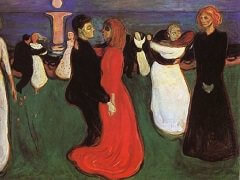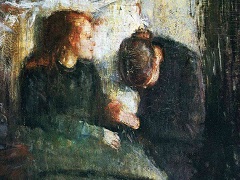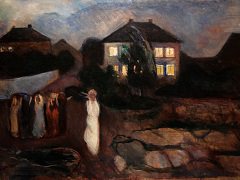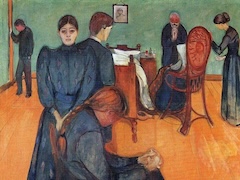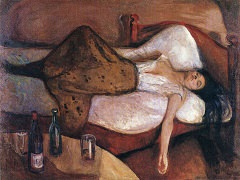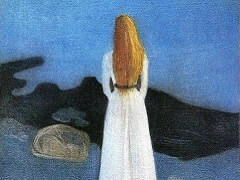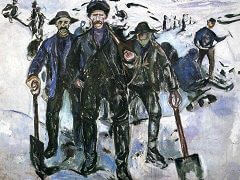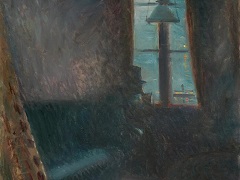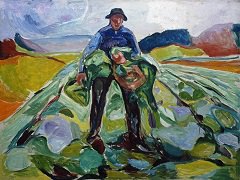Young Girl on the Beach, 1896 by Edvard Munch

Edvard Munch first used this figure of a solitary woman standing on a shoreline in a painting of 1891-92 known as The Lonely Ones. Although this early painting has been lost, the significance of the subject was such that he revisited it throughout his life in both painted and printed form. In these versions the woman is accompanied by the figure of a man, who stands apart and slightly behind her. The physical distance between the two figures and their pensive body language suggest lovers who have argued and this the fragile moment where reconciliation is either effected, or love lost. Munch's fraught view of the relationship between the genders is paralleled in the isolated setting in which he places his lovers; the infinite, restless interactions between tide and shoreline a potent metaphor for their mutual need and yet more profound incompatibility.
Young Girl on the Beach is a gentler meditation on loneliness. The man is removed from the scene, and our gaze rests solely on the fragile figure of the girl, lost in a reverie as she looks out to sea. Whereas The Lonely Ones evokes the very particular experience of isolation in human relationships, Young Girl on the Beach is more enigmatic. With her back turned to us she appears calm and composed, her white dress shimmering in the wan light, her hair gently waving in an evening breeze. The absence of any visible horizon emphasizes the enormity of the natural world which surrounds her, heightening our sense of her fragility and of the precariousness of life.
The print was made in Paris in 1896, an intensive period of printmaking in which Munch produced some of his great prints, including a small group of burnished aquatints of which Young Girl on the Beach is the masterpiece. Using zinc plates pre-prepared with aquatint the image was made in the manner of a mezzotint, with delicately modulated highlights scraped into the aquatint with a burnisher. After 1897 Munch never worked in the medium again and his colour aquatints are amongst his rarest and most sought after graphics.



